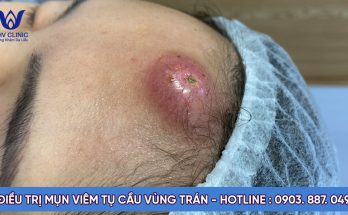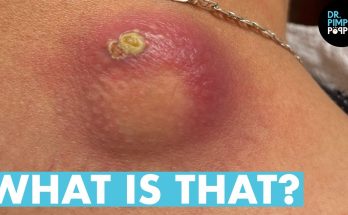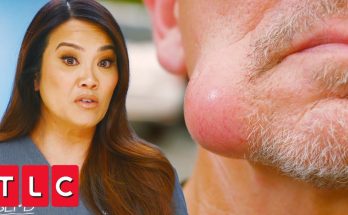Blackheads, Cysts, Bumps, and Lumps on Your Skin You Should be Knowing
- Blackheads
- Skin cysts (also called epidermoid cysts)
- Cherry angiomas
- Dermatofibromas
- Folliculitis
- Keratoacanthomas
- Keratosis pilaris
- Lipomas
- Neurofibromas
Skin Cysts
Cysts are noncancerous, closed pockets of tissue that can be filled with fluid, pus, or other material.
Cysts are common on the skin and can appear anywhere. They feel like large peas under the surface of the skin. Cysts can develop as a result of infection, clogging of sebaceous glands (oil glands), or around foreign bodies, such as earrings.
What cysts are like
Skin or epidermoid cysts usually are:
- Slow-growing
- Painless
- Smooth to the touch when they are rolled under the skin
Skin cyst treatment
Cysts usually do not cause pain unless they rupture or become infected or inflamed. Most cysts do not disappear on their own without treatment. Some cysts may need to be drained to relieve symptoms. That involves piercing the cyst with a scalpel and draining it, though that doesn’t cure the cyst.
Some inflamed cysts can be treated with a shot of cortisonemedication to cause it to shrink. Cysts that do not respond to other treatments or come back can be removed surgically if they cause troublesome symptoms.
Cherry Angioma
Cherry angiomas are smooth, cherry-red bumps on the skin. They can be different colors, including red, blue, or purple, and can be less noticeable on skin of color than on white skin. The size of the growths can vary from the size of a pinhead to about a quarter-inch in diameter.
Although cherry angiomas usually appear on the trunk of the body, they can pop up nearly anywhere.
The cause of cherry angiomas is not known, and they have no symptoms.
The growths, which are made of blood vessels or lymph vessels, usually appear on people over age 40.
Cherry angioma treatment
In most cases, cherry angiomas do not require treatment. If they are cosmetically unappealing or are subject to bleeding, angiomas may be removed by lasers, shave biopsy, or electrocautery – the process of burning or destroying tissue by use of a small probe with an electric current running through it. Removal may cause scarring. Cherry angiomas are more common in adults, and cherry hemangiomas (which are made of blood vessels only) are usually found in infants and children.
(Read about red birthmarks and your skin.)

Cherry angiomas are smooth, cherry-red bumps that develop on the skin, usually on the trunk of the body. They have no symptoms, and there is no known cause. They can be the size of a pinhead or up to a quarter-inch in diameter.
Dermatofibromas
Dermatofibromas are harmless round skin growths that are most commonly found on the arms and legs of adults. Their color can range from pink to light brown on white skin and dark brown to black on darker skin tones. Dermatofibromas contain scar tissue and feel like hard lumps in the skin.
Sometimes, dermatofibromas appear after injury, like a bug bite or after bumping your arm or leg.
Dermatofibroma symptoms
The symptoms of dermatofibromas include:
- A red, brown, or purple growth that can change colors over time
- A growth that is as small as a BB pellet
- Tenderness, pain, and itching; but growths are usually painless
- A dimple that appears when the growth is pinched
Dermatofibroma treatment
In most cases, there is no need to treat dermatofibromas. But the growths can be removed surgically or can be flattened by being frozen with liquid nitrogen.

A dermatofibroma (also called benign fibrous histiocytoma) is a noncancerous fibrous nodule that can happen anywhere on the body, but is more commonly found on the arms, legs, and upper back. In most cases, dermatofibromas are small and have no symptoms. But in rare cases, skin cancers may develop within one.
Epidermoid Cysts
Epidermoid cysts, also called sebaceous cysts or skin cysts, are benign (noncancerous) skin cysts formed by an outpouching from a hair follicle. Most commonly, epidermoid cysts are found on the genitals, chest, and back, but they also can pop up in other areas of the skin.
Epidermoid cyst treatment
The effective treatment of epidermoid cysts requires that the sac of the cyst be completely removed. If the cyst is squeezed and the discharge is forced out without removing the sac, the cyst will return. Usually, a doctor will be able to remove the cyst by making only a small cut in the skin. Antibiotics may be prescribed to treat infected cysts, and steroid shots can help with swelling and inflammation.
Folliculitis
Folliculitis is an inflammation of the hair follicles. It can be caused by an infection in the hair follicles, by chemical irritation, or by physical irritation (for example, shaving or friction from clothing). Typical body sites that are involved in folliculitis include the face, thighs, and scalp.
The main lesion in folliculitis is a papule or pustule with a central hair. The hair shaft in the middle of the lesion may not be seen.
Other signs and symptoms include:
- Multiple red to purple pimples and/or pustules on hair-bearing areas of the body
- Itchy skin
Folliculitis treatment
Topical antibiotics, oral antibiotics, or antifungal drugs may be used to treat infections that come with folliculitis, depending on the cause. Treatment also involves preventing further damage to the hair follicles. Steps that can help achieve this goal include:
- Easing friction from clothing
- Not shaving in the affected area, if possible. If shaving is necessary, use a clean new razor blade or an electric razor each time. Also, moisturize the hair before shaving, and shave in the direction of the growth of the hair.
- Keeping the area clean
Keratoacanthoma
A keratoacanthoma happens when cells in a hair follicle do not grow normally. The growth may be triggered by a minor skin injury in an area that previously had sun damage. Ultraviolet radiation from sun exposure is the biggest risk factor in keratoacanthomas.
A keratoacanthoma usually will appear on sun-damaged skin as a thick growth that has a central crusted plug.
Keratoacanthomas appear most often in people who are over the age of 60, and they are considered a low-grade skin cancer.
Keratoacanthoma symptoms
Keratoacanthomas are rapidly growing, red, dome-shaped bumps with central craters. Some keratoacanthomas can grow to extremely large sizes, occasionally 1 to 3 inches in diameter. Although less common in people of color, these cysts appear the same on all skin tones.
Keratoacanthoma treatment
Keratoacanthomas can be removed by:
- Cryotherapy (freezing the growth with liquid nitrogen)
- Curettage (scraping and burning off the growth)
- Surgical removal
- Injection of a cancer drug directly into the lesion
Keratosis Pilaris
Keratosis pilaris (commonly called KP) appears as “chicken skin bumps” on the skin. These bumps usually appear on the upper arms and thighs. They also can be on the cheeks, back, and buttocks. Keratosis pilaris, while unattractive, is harmless.
Keratosis pilaris treatment
Although the condition may remain for years, it gradually improves before age 30 in most cases. Treatment of keratosis pilaris is not medically necessary, but people who have this condition may want to seek treatment for cosmetic reasons.
The first treatment for keratosis pilaris should be intensive moisturizing. A cream such as AmLactin or Lac-Hydrin can be applied after bathing, and then reapplied several times a day. Other treatments may include:
- Medicated creams containing urea (Carmol-20) or alpha-hydroxy acids (Aqua Glycolic, Lacticare) applied twice daily
- Efforts to unplug pores by taking long, hot soaking tub baths and then rubbing and exfoliating the areas with a coarse washcloth or stiff brush
Lipomas
Lipomas are soft tissue tumors under your skin that usually are slow-growing and are harmless. They have a soft, rubbery consistency. Lipomas tend to form on the trunk, shoulders, and neck but can appear elsewhere on your body.
Lipoma symptoms
Lipomas can appear as solitary nodules or in groups. Most lipomas are less than 5 centimeters in diameter and have no symptoms, but they can cause pain when they compress nerves.
Lipoma treatment
Lipomas are not removed unless there’s a cosmetic concern, a compression of surrounding structures, or an uncertain diagnosis. Lipomas generally do not get into surrounding tissue, so they can be removed easily by excision (the use of a cutting instrument, like a scalpel).
There are other ways to treat lipomas outside of a standard excision. One is to manually squeeze the lipoma through a small cut. This technique is useful in areas with thin dermis, such as the face and extremities (like your hand or your foot). Liposuction-assisted lipectomy also can be used to remove large lipomas with minimal scarring. Lipotherapy is another option. In this, a fat-dissolving drug called deoxycholic acid (Kybella) is injected directly into the lipoma, leaving no scarring.
The symptoms of neurofibromas may vary, depending on where they are and the sizes of the tumors. Symptoms can include:
- A painless, slow-growing mass
- Occasional pain
- An electric-like “shock” when the affected area is touched
- Neurological problems if the tumor involves a major motor or sensory nerve or a nerve that is compressed between the tumor and a hard structure
Neurofibroma treatment
If the tumor is not causing any symptoms, no treatment is necessary. But doctors may choose to surgically remove the neurofibroma if it is affecting a major nerve. In most cases, neurofibromas are treated successfully and do not come back.
Takeaways
Cysts are noncancerous pockets of tissue that can be filled with fluid, pus, or other material. They’re common on the skin and may feel like large peas under the surface of your skin. Cysts can develop as a result of an infection, clogging of sebaceous glands (oil glands), or around foreign bodies, such as earrings. Some cysts don’t require treatment, but others can progress. Talk to your doctor if your bump grows or causes pain. They can prescribe medication or do procedures to treat the cyst.
Lumps and Bumps FAQs
- When should I worry about skin lumps? If you have a lump that’s growing in size, red or swollen, hard, and/or doesn’t move, talk to your doctor as soon as possible. These symptoms can be signs of a condition that’s more serious than a cyst.
- What does a cancerous skin lump look like? If a lump is cancerous, it won’t have normal edges that are even around all sides, and it will feel hard. It may be raised from the skin and pink or red in color.
- What do stress bumps look like? Bumps from stress will look like raised areas of your skin, ranging from small spots to larger patches. They will also appear in groups or clusters.





















